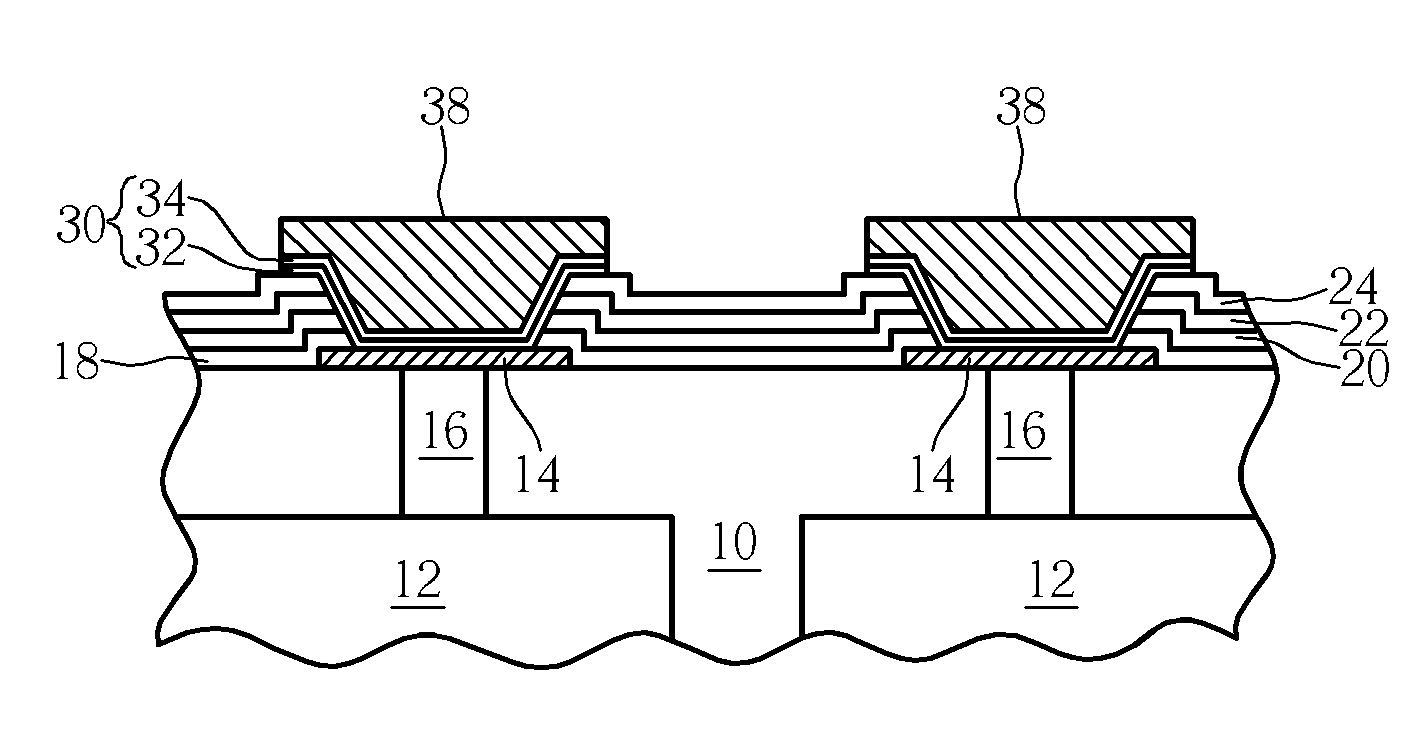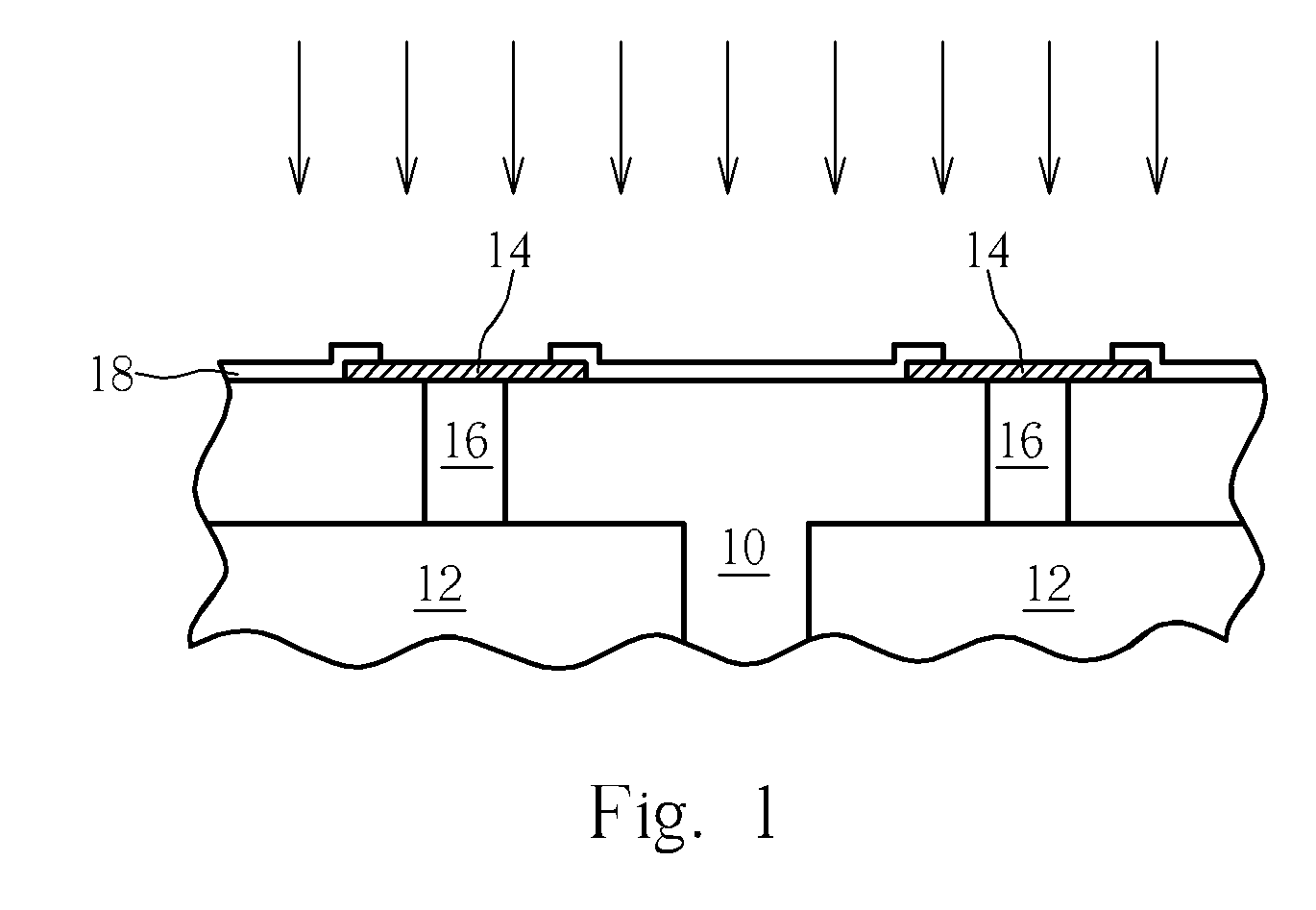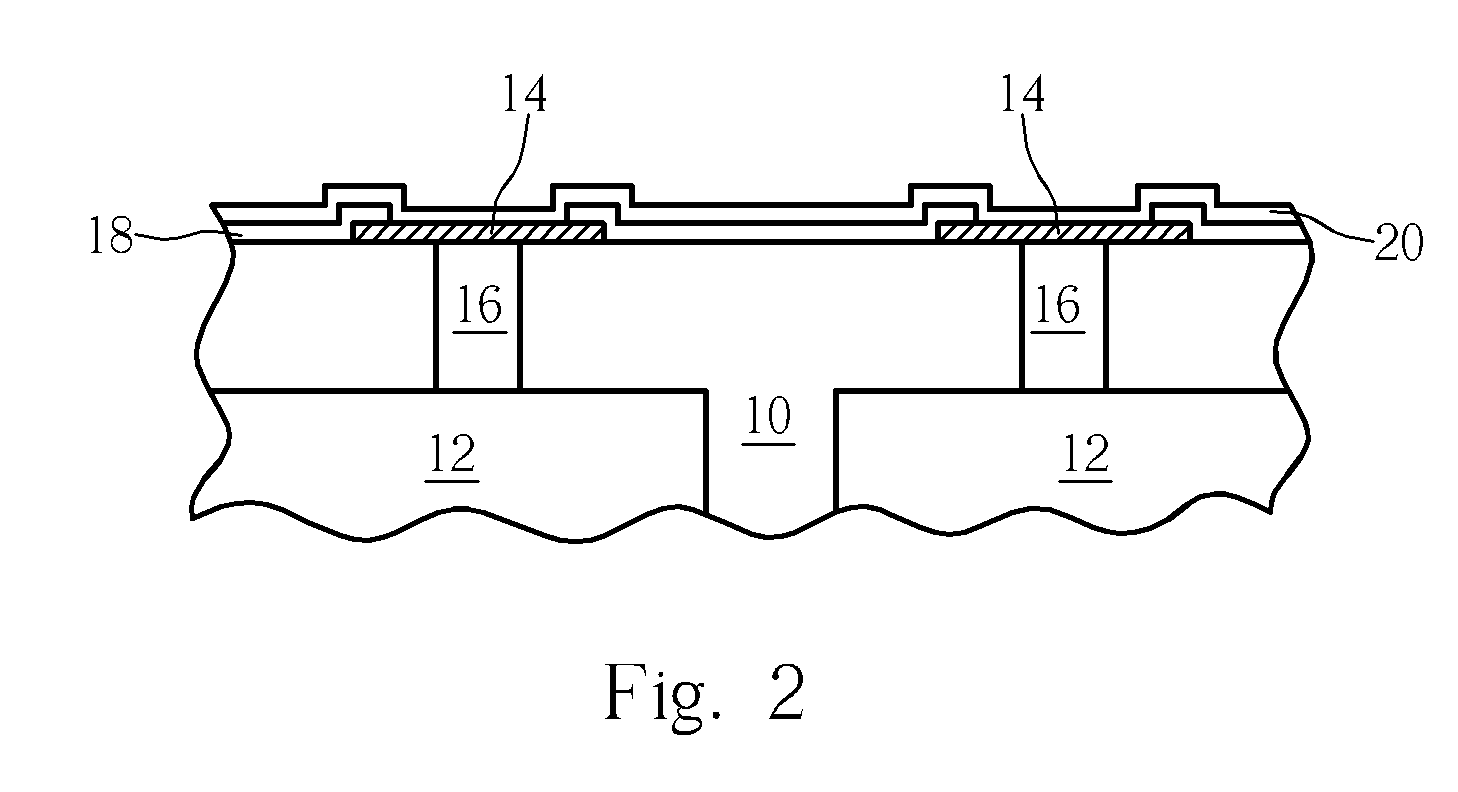Method of forming a wear-resistant dielectric layer
a technology of dielectric layer and wear-resistant layer, which is applied in the direction of microstructured devices, semiconductor/solid-state device details, coatings, etc., can solve the problems of cracking or peeling problems, high material density, and the thickness of silicon nitride layer formed by deposition technique has its limit, so as to improve yield and reliability, good step coverage effect of diffusion barrier layer and seed layer
- Summary
- Abstract
- Description
- Claims
- Application Information
AI Technical Summary
Benefits of technology
Problems solved by technology
Method used
Image
Examples
Embodiment Construction
[0011]Please refer to FIG. 1 through FIG. 8. FIG. 1 through FIG. 8 are schematic diagrams illustrating a wear-resistant dielectric layer according to a preferred embodiment of the present invention. As shown in FIG. 1, a substrate 10 is provided. The substrate 10 includes a plurality of devices 12, and a plurality of contact pads 14 disposed on the surface of the substrate 10. The devices 12 are semiconductor devices or MEMS devices, and the contact pads 14 are electrically connected to the devices 12 with contact plugs 16. The substrate 10 further includes a surface dielectric layer 18 on the surface. Subsequently, a surface treatment process is performed on the surface dielectric layer 18 to remove organic contaminations and particles adhered to the surface of the dielectric layer 18, and also to improve adhesion between the surface dielectric layer 18 and a dielectric layer (not shown) formed successively. In this embodiment, the surface treatment process includes the following s...
PUM
| Property | Measurement | Unit |
|---|---|---|
| inclined angle | aaaaa | aaaaa |
| thickness | aaaaa | aaaaa |
| thickness | aaaaa | aaaaa |
Abstract
Description
Claims
Application Information
 Login to View More
Login to View More - R&D
- Intellectual Property
- Life Sciences
- Materials
- Tech Scout
- Unparalleled Data Quality
- Higher Quality Content
- 60% Fewer Hallucinations
Browse by: Latest US Patents, China's latest patents, Technical Efficacy Thesaurus, Application Domain, Technology Topic, Popular Technical Reports.
© 2025 PatSnap. All rights reserved.Legal|Privacy policy|Modern Slavery Act Transparency Statement|Sitemap|About US| Contact US: help@patsnap.com



